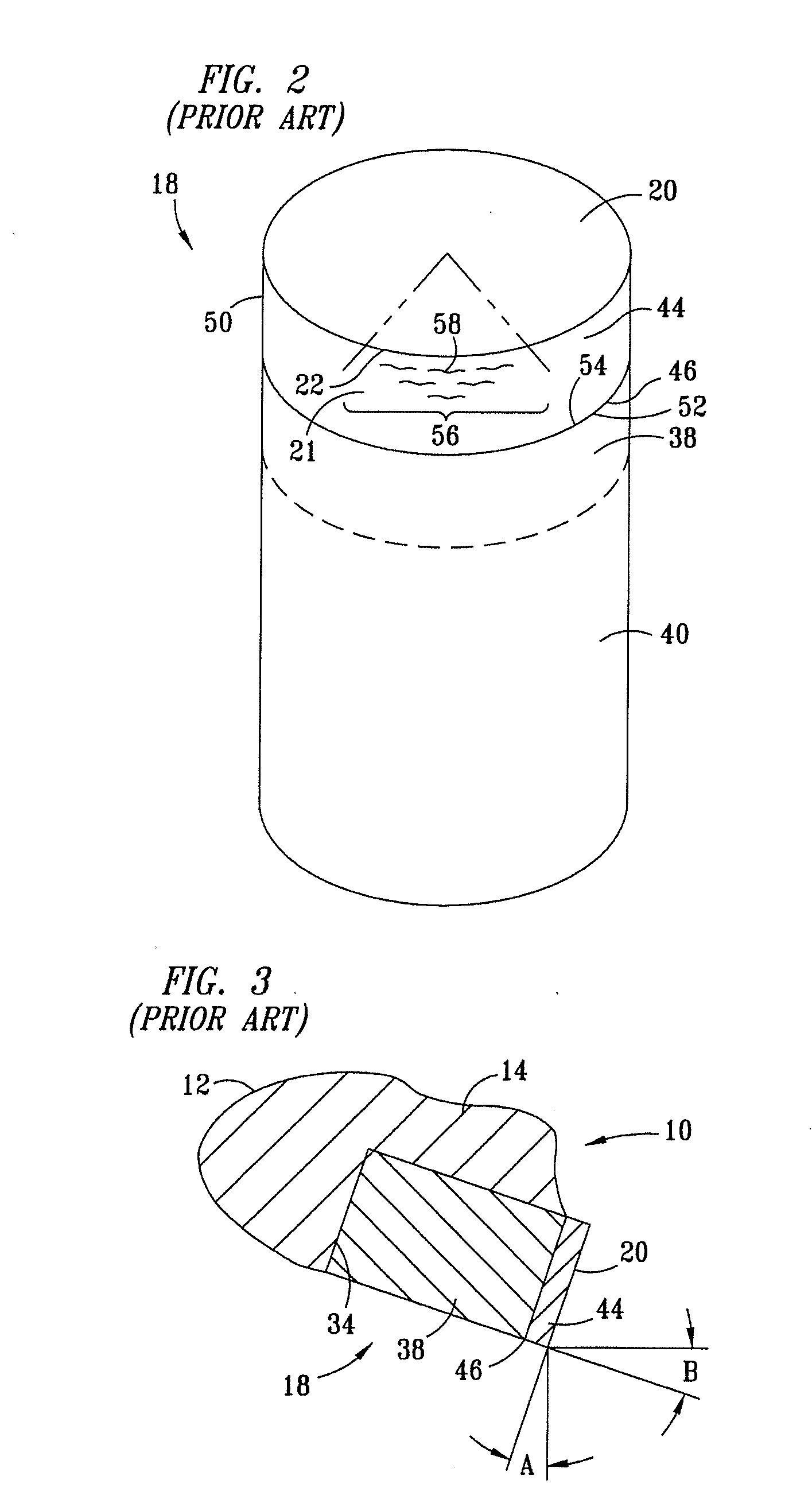Cutter having shaped working surface with varying edge chamfer
a technology of cutting edge and working surface, applied in the field of drill bits, can solve the problems of cutter failure, cracking, spalling, chipping and partial fracture, etc., and achieve the effect of reducing the adverse effects of sudden increase in loading
- Summary
- Abstract
- Description
- Claims
- Application Information
AI Technical Summary
Benefits of technology
Problems solved by technology
Method used
Image
Examples
Embodiment Construction
[0063]Embodiments of the present invention relate to cutters having shaped working surfaces with a varied geometry chamfer. By using such a structure, the present inventors have discovered that such cutters can better withstand high loading at the critical region imposed during drilling so as to have an enhanced operating life. According to certain aspects of the invention, cutters with shaped working surfaces with variable chamfer can cut efficiently at designed speed, penetration and loading conditions and can compensate for the amount of cutting load in changing formations. Such varied chamfer geometry has been found to variably increase the strength of the cutter edges in response to increased cutting depth, and according to certain aspects of the invention, to increase the strength of the cutter edges proportionally to the increased load associated with increased depth of cutting.
[0064]FIG. 6A shows an ultra hard top layer 100 for a cutter that has a shaped working surface 102 ...
PUM
| Property | Measurement | Unit |
|---|---|---|
| obtuse angle | aaaaa | aaaaa |
| angle | aaaaa | aaaaa |
| angles | aaaaa | aaaaa |
Abstract
Description
Claims
Application Information
 Login to View More
Login to View More - R&D
- Intellectual Property
- Life Sciences
- Materials
- Tech Scout
- Unparalleled Data Quality
- Higher Quality Content
- 60% Fewer Hallucinations
Browse by: Latest US Patents, China's latest patents, Technical Efficacy Thesaurus, Application Domain, Technology Topic, Popular Technical Reports.
© 2025 PatSnap. All rights reserved.Legal|Privacy policy|Modern Slavery Act Transparency Statement|Sitemap|About US| Contact US: help@patsnap.com



